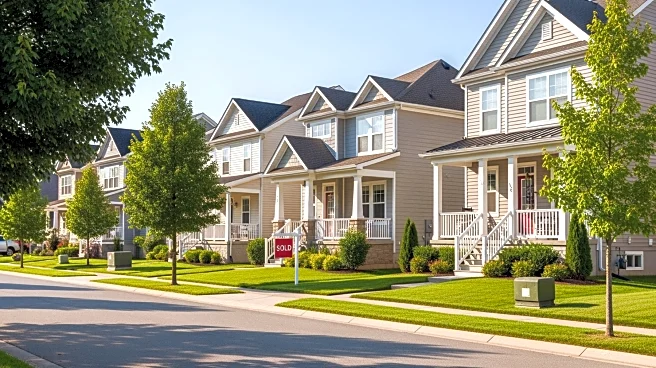What's Happening?
Port St. Lucie, Florida, is attracting interest from homebuyers across major U.S. metropolitan areas, according to recent data compiled by Stacker using Realtor.com statistics. The scarcity of homes on
the market nationwide, which remains below pre-pandemic levels, is contributing to elevated home prices despite a slowdown in sales over the past year. The report highlights that online house hunting has become crucial, with 97% of homebuyers utilizing online platforms for their searches. The data reveals significant interest from cities such as Miami, New York, and Washington, D.C., with Miami leading the view share at 41%. This trend indicates a shift in housing demand patterns, as buyers from various regions look to relocate to Port St. Lucie.
Why It's Important?
The increased interest in Port St. Lucie from major metropolitan areas underscores broader trends in the U.S. housing market, where limited inventory and high prices are driving buyers to explore new locations. This shift could impact local economies, real estate markets, and community demographics in Port St. Lucie. As more buyers from cities like New York and Miami consider relocation, local infrastructure, services, and housing policies may need to adapt to accommodate the influx. Additionally, this trend reflects the ongoing challenges in the national housing market, where affordability and availability remain critical issues.
What's Next?
As demand for homes in Port St. Lucie continues to rise, local real estate agents and policymakers may need to address the implications of increased interest from out-of-state buyers. This could involve strategies to manage housing supply, infrastructure development, and community planning to ensure sustainable growth. Furthermore, the trend may prompt other regions to evaluate their housing markets and consider similar shifts in demand patterns.
Beyond the Headlines
The movement of homebuyers from major metros to areas like Port St. Lucie may signal a broader cultural shift in living preferences, driven by factors such as remote work flexibility and lifestyle changes post-pandemic. This could lead to long-term changes in urban planning and development strategies across the U.S.











